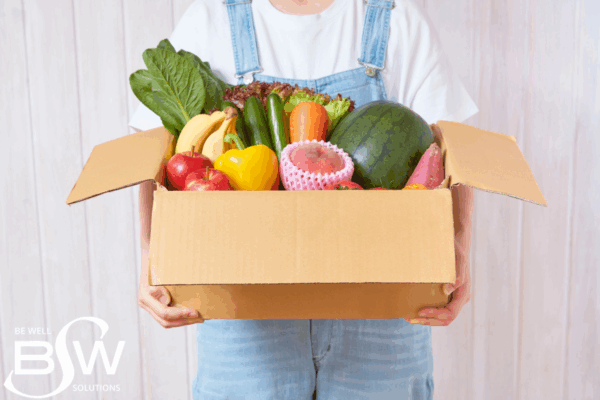As the leaves turn and the air gets crisp, fall and winter bring some of the best produce of the year. From hearty root vegetables to vibrant fruits like apples and pears, this season offers something special not only for your taste buds but also for your overall health. Here’s how to choose seasonal produce wisely, why it matters, and some easy ways to enjoy it.
Why Seasonal Produce is a Smart Choice
While most produce is available year-round, fruits and vegetables are at their peak in flavor and nutrition when enjoyed in season. When harvested at the right time, they are able to fully develop on the plant, resulting in richer taste and a more nutrient-dense profile compared to items picked early and transported long distances.
According to the Dietary Guidelines for Americans, 2020–2025, most adults should aim for 1.5-2 cups of fruit and 2.5-3 cups of vegetables per day. Yet, nearly 90% of the U.S. population falls short of the recommended daily vegetable intake, and about 80% do not consume enough fruit. Choosing seasonal produce can help close that gap by making fruits and vegetables more appealing and accessible.
Did you know that seasonal produce is also often less expensive? When fruits and vegetables are picked and gathered in their peak months, they grow more abundantly and don’t require as much storage or long-distance transportation, which reduces costs and risks of spoilage. Seasonal produce is also more likely to be locally grown, which not only supports farmers and strengthens your community’s economy but may also help reduce environmental impact by minimizing transportation, packaging, and food waste.
How to Choose the Best Fall and Winter Produce
Here are some tips for helping you select the best produce this season:
● Look for vibrant, rich colors and firm textures (e.g., deep orange sweet potatoes, bright greens in kale or cabbage, bright red apples).
● Avoid produce with soft spots, bruises, or mold. These are signs of damage or spoilage.
● Smell the produce if possible. Fresh winter citrus, for example, should smell sweet/tart; greens should smell fresh and not musty.
● Buy fruit that gives slightly when pressed (for those meant to be softer), or produce that feels heavy for its size (meaning more water content, often better flavor).
● Try your local farmers market. They often have produce at its peak flavor and freshness. To see what produce is in season near you, check out the Seasonal Food Guide website.
● Frozen or properly stored produce can be a good alternative when fresh produce is limited, and it often remains nutrient-rich as it is harvested and packaged at peak freshness.
Simple Ways to Celebrate Seasonal Produce
Fall and winter produce such as squash, sweet potatoes, Brussels sprouts, kale, apples, and citrus fruits are naturally rich in fiber, vitamins, minerals, and antioxidants that help support energy, digestion, and immune health during the colder months. Incorporating seasonal produce into your kitchen doesn’t have to be complicated; there are plenty of easy (and delicious!) ways to enjoy fruits and vegetables every day.
Some examples include roasting root vegetables for a hearty side dish, tossing dark leafy greens into soups or grain bowls, or using spaghetti squash as a lighter alternative to pasta. Citrus fruits are also a great source of vitamin C and make a quick snack, while warm spiced apples topped over oatmeal provide fiber and lasting energy. Choosing seasonal fruits and vegetables not only supports your health, but also adds variety and freshness to meals throughout the year.
Your Next Step: Try Something New This Season
Next time you’re grocery shopping or visiting a local market, challenge yourself to select a few seasonal items you’ve never used before or haven’t had in a while. Use one in a snack and the other in a main dish. Notice how the colors, flavors, and textures upgrade your meals this season; it may surprise you!
Need Inspiration?
Check out these trusted sites for seasonal recipes:
● USDA – Seasonal Recipes
● Harvard’s Nutrition Source – Recipes
● EatRight (Academy of Nutrition and Dietetics) – Recipes
Don’t keep it to yourself. Seasonal produce is even more fun and inspiring when it’s shared. You might just inspire someone else to try a new fruit or veggie, too! Swap ideas with coworkers, share a photo with friends, or cook a simple seasonal meal with family.
Making seasonal produce a regular part of your diet is a simple step toward better health and greater enjoyment at the table. Take advantage of the vibrant options fall and winter have to offer.
Written By: Haley Clemons, Be Well Solutions Dietetic Intern
Continue Reading October 2025 Newsletter: Work-Life Balance and Your Health – 8 Tips on How to Avoid Burnout

